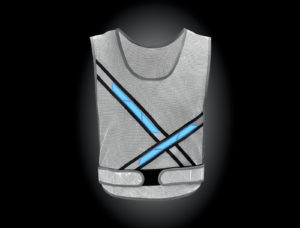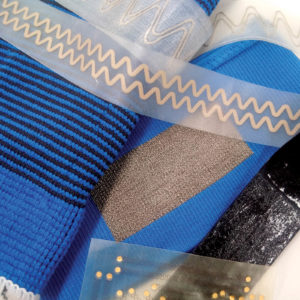
Textile is rapidly becoming the most effective wearable technology form factor,” says Tony Chahine, CEO of Myant & Co., a member of the Canadian-based Smart Textile and Wearables Innovation Alliance (STWIA). “Smart textiles and wearables have the ability to provide a holistic picture of the body, enhance everyday life and even transform the future of the health care systems.”
Announced April 26, 2016, the formation of the STWIA, with support from the National Research Council of Canada (CNRC) and a phalanx of Canadian companies and research institutes, aims to launch the country into the forefront of research and technology transfer for what is characterized as a rapidly growing market with the potential to increase industry expansion in textiles, product development and new technologies.
Linking the supply chain
Characterized as a grassroots initiative that brings together 30 Canadian companies from all levels of the supply chain for wearables, the Alliance seeks to help companies with unique expertise and technologies in different areas reach across to experts in related fields to facilitate the formation of new products and technologies. “The initiative began more than four years ago,” says Thomas Ducellier, executive director of the Printable Electronics Flagship Program with the CNRC, “when we began connecting companies in the digital printing industries around the new field of printed electronics using inkjet technologies. By 2014 there was a growing interest within the Canadian textile industries for engaging with these new technologies.”
At the same time, says Ducellier, the electronics industries understood the benefits of textiles as substrates for printed electronic circuitry to the wearables markets. “The CNRC recognizes that domestic supply chains are essential for the advancement of smart textiles and wearable technologies. We are proud to be facilitating the Smart Textile and Wearables Innovation Alliance to allow companies to be part of a collaborative ecosystem and make revolutionary breakthroughs.”
Myant & Co., Etobicoke, Ont., is a leading Canadian knitting, finishing and research company that owns and operates a state-of-the-art robotic knitting facility with more than 20 computerized seamless and warp knitting machines. Myant’s research into reactive and conductive yarns aids them in integrating textiles that distribute or collect power from a garment, an important part of wearable technology and smart clothing. The company focuses its capabilities on the consumer, industrial, wellness and health care markets.
“Myant is a leader in the functionalization of textiles,” says Ilaria Varoli, executive vice president of the advanced textiles and wearables company. “We see textile as an integral platform and form factor in the advancement of technology, including wearable technology. Textiles are around us more than any other material, and hence is the most convenient and effective form factor. We are a founding member of this initiative, started with the purpose of congregating various and relevant Canadian industries. The collaboration was formed with the intent of mutual support as well as advancing the world of innovation in Canada.”
“Canadian companies are world leaders in wearable technology and smart textiles,” says Derek Luke, CEO, InteraXon, Toronto, Ont., a wearables manufacturer focusing on brain-sensing technologies, “and it’s up to us to seize this opportunity to build a globally competitive industry centered in Canada. The CNRC Alliance is already allowing us to communicate effectively as an industry and to form valuable strategic collaborations.”
Applications at work
The Smart Textile and Wearables Innovation Alliance includes a number of special areas of interest.
- Diagnostics: Smart textiles could detect indicators of diseases such as diabetes, Alzheimer’s and epilepsy, and monitor their progression.
- Wellness and health care: Enabling textiles to offer continuous monitoring could allow individuals to take more control over their own health.
- Workplace safety: Smart textiles have the potential to monitor the wearer’s physical state and communicate when dangerous conditions, such as excess internal body heat, are occurring.
- Brain training and relaxation: Smart textiles, such as headbands, could be enabled to provide brain exercises or stimulate relaxation.
- Prosthetics: Prosthetic limbs could function with added precision with the use of bands that detect their movement and position in relation to the body or other limbs.
- Fitness and performance: Sports equipment and clothing can be outfitted to track performance and fitness levels.
- Third-party testing and certification of manufacturing technology and quality.
“The issue of certification and standards will be key to making this alliance successful,” says Ducellier. “This will help more Canadian companies have access to the capital needed to advance.”
According to Ducellier, the initiative for forming the alliance has been a grass-roots effort coming from many innovative Canadian companies wanting to know more about what other companies have been developing, and being aware that forming a working relationship between all of these innovators can only help with market growth.

Potential partnerships
Currently there are more than 20 companies and research groups that are members of the STWIA—including a few international corporations such as 3M Canada, IBM Canada and Xerox Research Centre of Canada—and quite a few electronics-based companies that make software apps or sensing devices that can be incorporated into wearables. Notably, this alliance is the first time many have been made aware of each other, and of the possibilities of collaborating.
“Many Canadian companies have been developing smart technologies on their own, but have been unaware of similar companies that could become part of the supply chain in developing new products and technologies,” says Ducellier. “Sixty percent of these members are curious to know more about the other members; 35 percent are seriously looking for partners to collaborate with.”
The alliance will be targeting companies that can incorporate smart textiles that push the boundaries of fashion, function and technology, sports and fitness, wellness and health care, medical diagnostics, workplace safety, brain training and relaxation. According to Ducellier, one key to this action will be the accrediting process for third-party testing and certification of next-generation technologies. According to an CNRC press release, this will help “facilitate the formation of supply chains to help build the industry, create market visibility and provide access to export opportunities” that will position Canada as a global leader in this emerging industry.
The group formally met for the first time in April. There is a great deal to discuss and many hours of exploring possible combinations of technologies and teams before going to production of new products. But this initiative is positioning itself for the long run.
Bruce N. Wright, AIA, is a consultant to designers and architects and a frequent contributor to Specialty Fabrics Review, Fabric Architecture and Advanced Textiles Source.
 TEXTILES.ORG
TEXTILES.ORG


